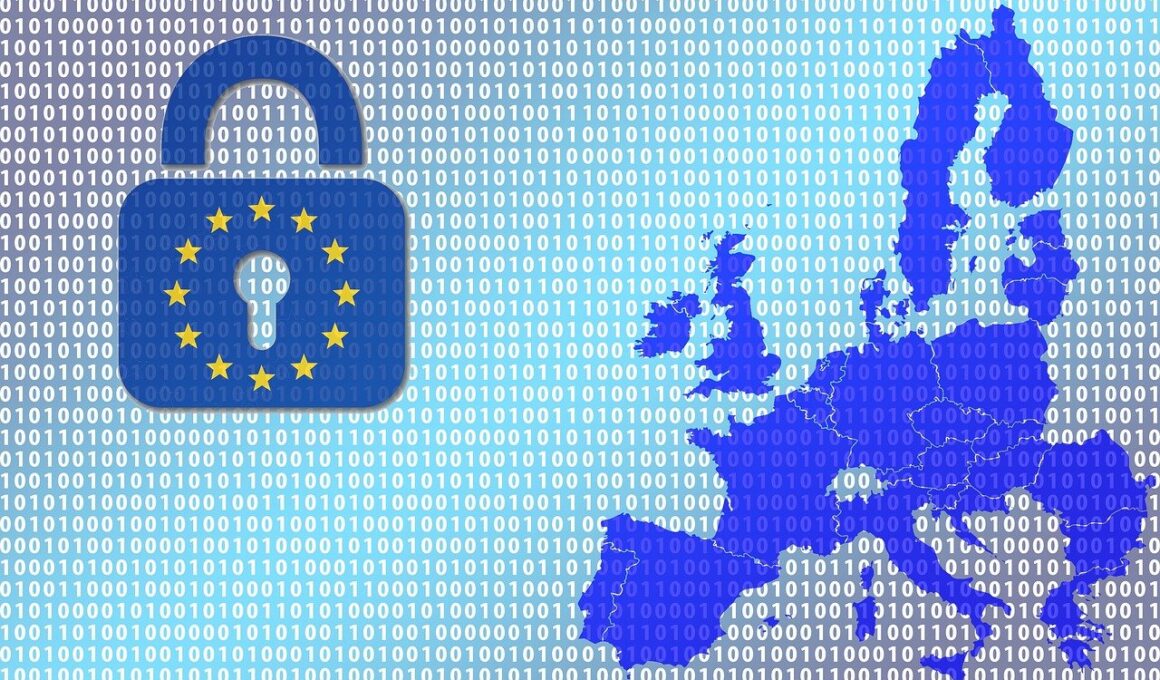Privacy Concerns and Data Security in Football Fitness Technology
In recent years, the integration of technology into football fitness has greatly enhanced training methods and player performance metrics. However, with these advancements come significant privacy concerns concerning the data generated and shared by fitness applications. Football clubs and players often rely on these mobile applications and wearables to gain insights into performance, health metrics, and even injury predictions. Protecting this sensitive information is crucial not only for individual athletes but also for clubs. Unauthorized access to personal data may lead to breaches that could compromise the player’s career and well-being. With personal data collected, clubs must implement strict security protocols. Any lapse in security could result in significant repercussions. Ensuring that all data is transmitted securely, stored properly, and anonymized when appropriate is paramount in this age of technology. The issue of data security transcends personal privacy; it becomes a shared responsibility between software developers, fitness trainers, and players. As the football industry continues to evolve, so too does the challenge of addressing privacy within these necessary technological advancements.
One major aspect of privacy concerns involves consent from the players who use fitness apps. These players deserve to understand how their data is being used and who has access to it. Transparent data policies need to be established by fitness app developers and club management to maintain trust and ensure compliance with regulations. Many applications often require users to agree to extensive terms of service, which can obscure critical details regarding data usage. Due to the complexities involved, many players may inadvertently consent to terms they do not fully understand, highlighting a significant ethical consideration in the industry. Player education on data rights and security measures is necessary. Clubs should proactively guide their athletes in deciphering privacy agreements and their implications. Additionally, workshops and training sessions emphasizing data security can empower athletes to protect their information further. As awareness grows, it is likely that more athletes will engage in conversations around their data rights. A well-informed player base will not only enhance individual privacy objectives, but also uplift the standards of data protection within the broader football community.
Compliance with Data Protection Regulations
Compliance with regulations such as the General Data Protection Regulation (GDPR) is also crucial in the context of football fitness technology. Under GDPR, players have specific rights regarding their personal data, including the right to access, rectify, or delete information. Football clubs using data analytics tools must ensure compliance with these regulations to avoid hefty fines and reputational damage. Additionally, there is a legal obligation to demonstrate accountability regarding data processing operations. Maintaining critical records about data usage, sharing protocols, and consent collection is crucial. Clubs must invest in technology that guarantees compliant data handling. This includes ensuring that third-party app services also adhere to these regulations as part of due diligence in partnerships. Additionally, data breach notification requirements necessitate immediate reporting to players and relevant authorities if their data is compromised. Given the sensitivity surrounding athlete data, timely communication is essential to mitigate panic and provide necessary support. As football technology becomes more pervasive, organizations must view compliance not just as a legal requirement, but also as part of a proactive approach to player care and organizational integrity.
The rise of artificial intelligence (AI) in fitness apps has further complicated privacy discussions in football technology. AI systems often analyze vast data sets to deliver insights and predictive analytics. While this technological leverage can enhance player performance, it raises questions about data anonymization and ownership. Players and clubs should understand how AI utilizes their data, especially if it’s being commodified for commercial gain. This growing reliance on AI necessitates strict measures to protect individual rights. Developers should ensure transparency in how AI models are trained and what data sources they utilize. Additionally, the role of ethical AI usage in football fitness cannot be overstated. Machine learning algorithms must maintain fairness while analyzing performance input data. Developers also must address bias and discriminate against certain player groups. Engaging players in discussions regarding AI use helps cultivate a culture of transparency. By actively participating in shaping AI policies, players can help develop a framework that respects their privacy and promotes ethical practices. Thus, clubs should consider these aspects to ensure that data-driven technologies align with player values and concerns.
Future Trends and Recommendations
As football fitness technology advances, anticipatory measures must be taken to address potential future privacy threats. Emerging technologies such as wearable devices, biometric analysis, and cloud storage solutions amplify the data collected, presenting more opportunities for breaches. Clubs need to stay knowledgeable about the evolving landscape of data security best practices. Collaborating with cybersecurity experts to conduct thorough audits of existing systems can help identify vulnerabilities. Moreover, developing an incident response plan for promptly addressing potential data breaches is essential. Regular staff training on data protection and cybersecurity measures is critical for minimizing risks. Players should also be involved in developing security protocols—encouraging their input fosters accountability. This participatory approach could lead to more effective data governance frameworks. Furthermore, football organizations must remain current regarding global data protection policies, ensuring their adherence to any changes that may occur. A focus on education, alongside proactive protective measures, can improve the overall landscape of player privacy in football fitness technology. To ensure trust, clubs must remain transparent about data practices while advocating for policies that prioritize athlete rights.
Another important factor in ensuring data security in football fitness technology is fostering a collaborative culture among stakeholders. Active collaboration between tech developers, clubs, players, and regulatory authorities can lead to the establishment of best practices. Sharing knowledge, resources, and insight into current security threats can enhance the collective approach to data protection. Football organizations could benefit from creating strategic partnerships with cybersecurity firms that specialize in protecting sports data. These alliances allow clubs to access advanced protection strategies without large upfront investments. Joint initiatives could also promote awareness regarding the responsible use of technology among players. Incorporating these partnerships into overall club strategies shows a commitment to safeguarding player data. Additionally, football governing bodies should take responsibility for issuing guidelines tailored for technology use in sports environments. By creating standards of care around data security, organizations can help set a proactive tone throughout the industry. Greater collaboration fosters long-term solutions, paving the way for innovative technologies to thrive while prioritizing athlete privacy. Ultimately, aligning interests among stakeholders leads to a more secure environment across the football fitness landscape.
Conclusion
In conclusion, as the intersection of football and technology continues to evolve, addressing privacy and data security concerns is of utmost importance. Players, clubs, and tech developers share a collective responsibility to uphold strong data protection standards that prioritize athlete rights. Successful implementation requires informed dialogue among all parties and a commitment to transparency in data use. The future of football fitness technology hinges on collaborative efforts to develop secure frameworks that keep pace with innovations in data analytics, AI, and wearables. By prioritizing data protection, clubs can build trust with players, ensuring they feel confident in sharing their personal data. The potential benefits of technology are enormous; however, they must not come at the cost of individual privacy rights. There must be a cultural shift within organizations that places data protection at the forefront of operational decisions. Therefore, fostering a collaborative and responsible approach to data security will allow the sports industry to thrive responsibly while embracing the game-changing innovations that technology brings.
If the football community embraces a commitment to protecting athletes’ personal information, the relationship between technology and football fitness can flourish. Navigating the complexities of privacy, data security, and compliance will require ongoing effort and adaptation to new challenges. As football fitness technology advances, staying informed about security measures, compliance obligations, and ethical considerations will be imperative. The football community must continue to engage in educational initiatives, open communication, and collaborative strategies to create a safer and more accountable sports environment. Ultimately, the fight for athletes’ privacy rights can pave the way for innovative advancements that contribute to the overall improvement of football performance while safeguarding their dignity. Striking a balance between leveraging technology and maintaining control over personal data will remain essential in defining the future of football fitness technology. Fostering an atmosphere of trust can enhance performance while cultivating a sense of security among players. Once established, this trust will impact how technology is integrated into the game. The future of data security and technology in football is bright, provided that all stakeholders commit to collaborative efforts that uphold the privacy of athletes.


